gaming
Ultra-Rare Pokémon Card Valued at $250K Going on Auction via Ethereum Network Polygon
Published
4 months agoon
By
admin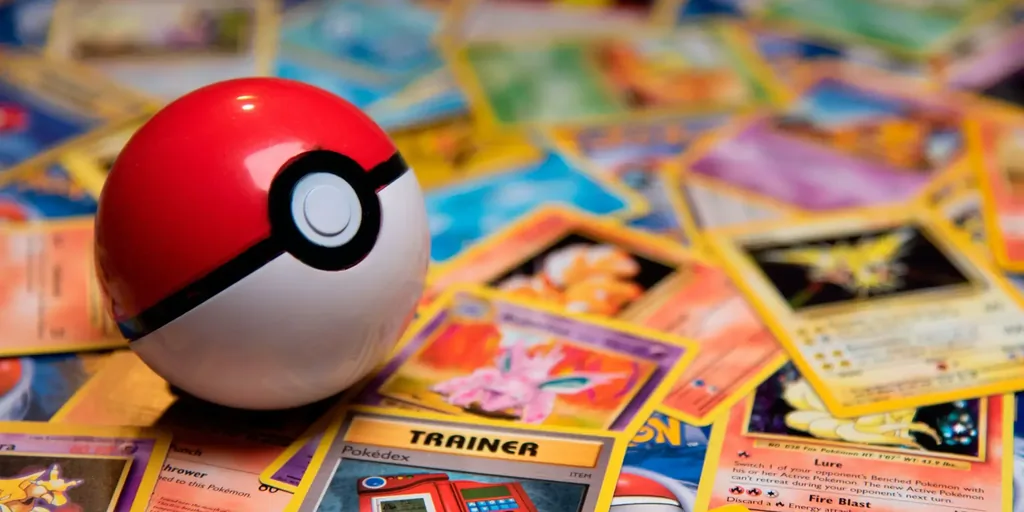
A pristine, first-edition Holographic Charizard Pokémon card from 1999 is going up for auction Friday, tokenized via Ethereum scaling network Polygon and auctioned by collectibles platform Courtyard.
Polygon Labs and Courtyard have teamed up to tokenize the PSA 10-graded card, securely stored in a Brink’s vault, with an estimated value of $250,000. The 30-day online auction aims to demonstrate blockchain’s potential in the collectibles market, the companies said.
“This auction isn’t just about a Charizard card; it’s about showing how blockchain can revolutionize the collectibles world,” said Polygon Labs CEO Marc Boiron, in a statement. “From traditional collectors to DeFi enthusiasts, we’re inviting everyone to experience the benefits of on-chain ownership.”

The digital platform enables the sale of physical items (like cards) via blockchain tokens, or NFTs, with features including secure storage, high-resolution 3D models, and instant global trading. Collectors can access an immutable ownership record and trade without physical shipping complications. Owners who want to have the physical card in hand can have it shipped to them from the vault at any point.
According to a Polygon Labs representative, the company “purchased the card directly from a reputable seller in the trading card space.” Similar cards have been sold for prices between $264,000 and nearly $400,000 since 2020, per data from Public.com.
“Tokenization is changing the game for collectibles,” said Courtyard CEO Nicolas le Jeune, in a statement. “With this auction, we’re not just spotlighting an iconic card; we’re demonstrating how Courtyard’s platform is transforming how people collect and trade.”
Editor’s note: This article was written with the assistance of AI. Edited and fact-checked by Andrew Hayward.
GG Newsletter
Get the latest web3 gaming news, hear directly from gaming studios and influencers covering the space, and receive power-ups from our partners.
Source link
You may like


Tokenized Gold Nears $2B Market Cap as Tariff Fears Spark Safe Haven Trade
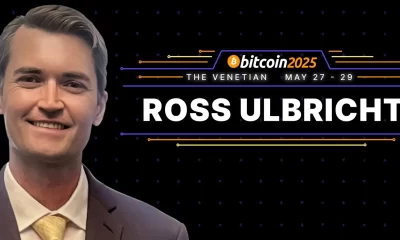

Ross Ulbricht To Speak At Bitcoin 2025


Solana Eyes $200 Target As It Gains Momentum – Recovery Could Mirror 3-Month Downtrend
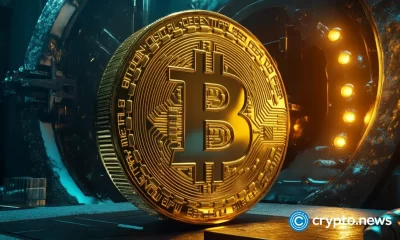

BTC-denominated insurance firm meanwhile secures $40m in VC funding


‘You Want To Own the Most Hated Thing’ – Arthur Hayes Says Ethereum Set To Outrun Solana As Memecoin Craze Fades
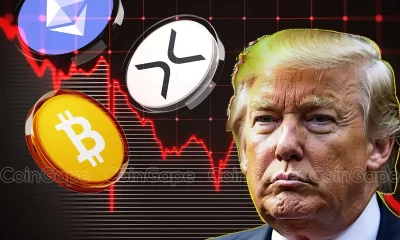

Crypto Braces for a Hidden $4.5 Trillion Catalyst for Bitcoin, Ethereum, Cardano, XRP Price
gaming
Gaming Tokens Are Disappearing From Crypto’s Top 100—What Happened?
Published
2 days agoon
April 8, 2025By
admin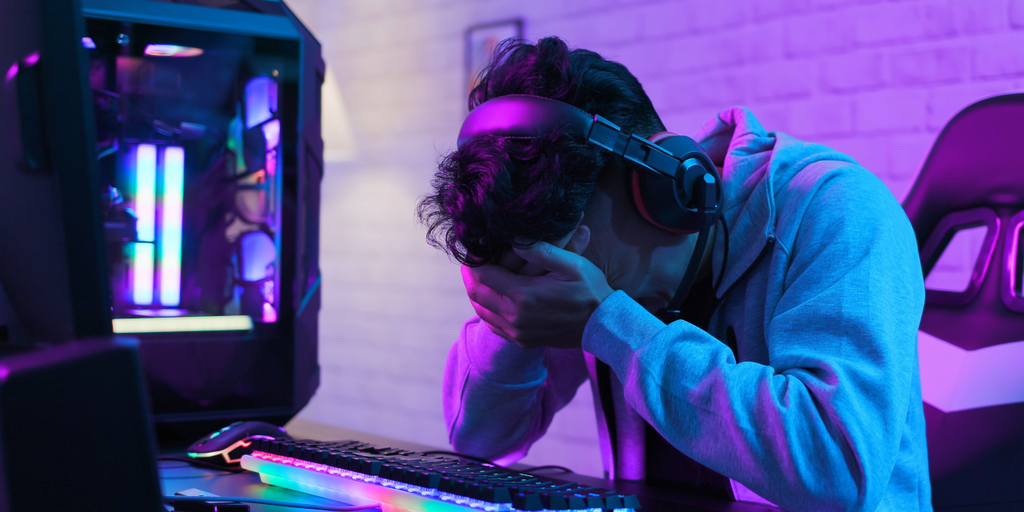

There are now zero gaming tokens in the top 100 cryptocurrencies by market capitalization, according to data from CoinGecko, after Immutable (IMX) fell from the rankings on Monday. CoinMarketCap’s ranking still has a few gaming tokens near the bottom of the list, but the takeaway is much the same: Top gaming coins are down bad.
Crypto games have hit prominent peaks over the last year in terms of both mainstream reach and praise from gamers, but the tokens are fading fast and new ones are struggling to catch on.
Just a year ago, there were six gaming tokens in the top 100, according to the Wayback Machine. At the time, CoinGecko’s gaming tokens category had a total market capitalization of $29.3 billion. It’s down 68% to $9.24 billion today, even with more tokens launching since.
Ethereum gaming platform Immutable had been the last holdout, and its token has fallen hard over the last year. IMX was the 31st most valuable cryptocurrency in the world in December 2023, per CoinGecko, after investment firm VanEck gave Immutable a big vote of confidence, projecting that IMX would land in the top 25 tokens in 2024. Even one year ago today, it was ranked #34.
Since then, IMX is down 87% over the last year amid a broader crypto gaming cooldown and SEC investigation that the firm recent said was closed. Immutable’s token has plunged 29% in the last week alone, compared to Bitcoin at a nearly 10% dip, and was the biggest weekly loser in CoinGecko’s top 100 on Monday—until it slid out of view to its current rank of #103.
Other major gaming tokens that were once in the top 100 have also fallen hard in the last year—such as Gala Games (GALA), which is down 80% (19% this week alone), and The Sandbox (SAND), which has fallen 64% in that span (and 16% in seven days).
Those longtime coins have fallen sharply from respective peaks set back in 2021. But even big, recently launched gaming tokens are struggling. Last year’s Pixels (PIXEL) token has plunged 98% from its peak, while Notcoin (NOT) is down 94% and Hamster Kombat (HMSTR) has fallen 68%.
Last week, the GUN token tied to Gunzilla Games’ popular Off the Grid game and its Avalanche L1-based GUNZ network launched, marking the biggest gaming token rollout in months. But it’s already down 62% from the peak price, even before Gunzilla gets GUN integrated into the game.
Better games are here
Off the Grid was Decrypt’s pick for 2024 GG Game of the Year, and after making a big splash last fall, it has helped fuel perceptions that the current crop of crypto games is better than it’s ever been. It’s a big step up from the play-to-earn surge of 2021, driven by the simplistic monster-battling game Axie Infinity.
“In 2021, it was safe to say that it was purely a narrative with zero products, ignoring the top-performing ones like Axie,” pseudonymous Treeverse game founder Loopify told Decrypt. “Now, a few years later, there is actually a wide range of products, but [they] still need time and they haven’t broken into the mainstream.”
Back then, Axie Infinity led the way before its in-game economy, token, and player base took a major hit in early 2022. Now, there’s now a range of quality games, plus games that have drawn millions of players—though popularity and acclaim aren’t always overlapping attributes.
Hamster Kombat drew in 300 million players for the tap-to-earn Telegram game last summer, albeit with repetitive, rudimentary gameplay. Once the token launched in September, players griped about the price and then largely disappeared, while developers were slow to launch a follow-up season.
Off the Grid had one of the most successful public launches for a crypto game in October, becoming the top free title on the Epic Games Store—beating out Fortnite in the process. Farming game Pixels and trading card game Parallel have both drawn praise from players and cultivated growing audiences, while survival experience Crypto: The Game has been a viral, albeit niche hit.
“I actually think the state of gaming is in a solid position,” Jaxie, the pseudonymous community manager for crypto gaming clan GIA, told Decrypt. “We have great games starting to launch, which could onboard millions into the ecosystem.”
But there are misfires
Making a good game takes time—just ask Rockstar Games, which has been developing Grand Theft Auto 6 for seven years with a massive team and funding. This explains why, despite hype for crypto gaming starting years ago, we’re only starting to see the fruits of that labor now.
Equally, that has led to the downfall of crypto games that have attempted to do too much, too soon. The Illuvium franchise is a prime example. Illuvium’s token debuted in 2021 and quickly peaked at $1,749, per CoinGecko. This caused a whirlwind of hype around the project, causing expectations to be sky-high when the team released three interconnected games in July 2024.
However, Illuvium did not live up to expectations, with co-founder Kieran Warwick admitting this February that there were valid “concerns” about its gameplay amid a planned overhaul. The ILV token is down 99.4% from its all-time high to a current price of just $10.60.
“Crypto games 99% of the time just aren’t good,” Munnopoly, a pseudonymous team member behind gaming meme coin MLG, told Decrypt. “They seem to be crypto [tokens] first and games second. I think they have always been struggling to bridge the gap with Web2 gamers.”
One title that appeared poised to bridge that gap was Deadrop. With former Call of Duty and Halo developers and popular streamer Dr. Disrespect involved, mainstream gamers were paying attention as it took shape. However, the studio shut down in January as it ran out of runway following a messy breakup from Dr. Disrespect, amid allegations of inappropriate conversations with a minor.
“I think Deadrop’s cancellation was a major setback for the space,” said content creator MayorReynolds. “It was one of the few games in the space that had the long-term potential to stand on its own as a video game and implement Web3 features in a way that gamers and players could grasp.”
However, gaming projects running out of cash isn’t a rarity. Recently, blockchain gaming ecosystem Treasure announced a major restructuring and downscaling due to financial woes, and Blockworks reported last week that Neon Machine—the creator of shooter Shrapnel—is running out of money.
The makers of Ethereum game The Mystery Society suspended development on the social deduction game in February, with co-creator Chris Heatherly calling out what he saw as destructive behavior from all corners of the blockchain gaming industry.
“Greed and stupidity from just about all players is killing the space before it can prove itself,” Heatherly told Decrypt then. “We need to be focused on building healthy on-chain businesses first, and end this [token generation event]-to-nowhere ponzinomic fallacy. Every Web3 gaming founder I know is frustrated, burned out, and just doing what they are doing to try to survive—but with true conviction evaporating by the day.”
Rethinking the narrative
Part of the issue around gaming tokens lately, according to Loopify, is that investors are gravitating towards crypto assets that are more likely to flip a profit. Since the last major gaming bull run, he noted, the industry has seen waves of investment in meme coins, then social finance, and more recently artificial intelligence.
With each wave of hype that flows to another asset category, less attention is paid to gaming tokens. Such tokens remain volatile in the market, but with much sharper downswings of late.
“The narrative disappeared a while ago, [and] so did a lot of willing buyers since crypto plays [into] trends,” Loopify told Decrypt. “Even if the games were better and at a cheap price for investment in the form of NFTs, tokens, and equity—the market wouldn’t be efficient enough to price them on that straight away. It would take some time for it to reflect.”
Jaxie, however, questions if crypto games even really need a token at all. He believes that gamers only really care about owning their skins via the blockchain, not a game-specific token. Such tokens fuel speculation around projects, but the negative perception around a crashed token can rattle these communities and create impossible expectations.
“Most games shouldn’t run on their own token in the first place,” he said. “Launching a token seems to be more of a marketing tool or crowd pleaser to the current base—don’t get me wrong, I farm those airdrops too—than an actual game utility token.”
The recent wave of tap-to-earn games has seen countless tokens launched to feed each game’s necessary incentive to keep tapping. Ultimately, however, there is very little utility for the tokens post-launch, leading to them plummeting in value. It’s happened over and over again, from Hamster Kombat to Catizen and Zoo, and then some.
Furthermore, the play-to-airdrop trend that swept the industry last year again put tokens in the pockets of players with little incentive to hold onto them. Like the earlier play-to-earn craze that eventually crashed and burned, the initial buzz fueled a surge in interest and sentiment—but the downfall can be painful for projects and players alike.
“Most Web3 gamers are just crypto degens here to make money,” Jaxie said. “Most [crypto] games have a 90-day lifespan before [the] player base drops off significantly—so why build for an economy you know will have a massive population dropoff in three months?”
Edited by Andrew Hayward
GG Newsletter
Get the latest web3 gaming news, hear directly from gaming studios and influencers covering the space, and receive power-ups from our partners.
Source link
gaming
This Week in Crypto Games: ‘Off the Grid’ Token Live, Logan Paul ‘CryptoZoo’ Lawsuit Continues
Published
4 days agoon
April 6, 2025By
admin

The crypto and NFT gaming space is busier than ever lately, what with prominent games starting to release, token airdrops piling up, and a seemingly constant array of other things happening at all times. It’s a lot to take in!
Luckily, Decrypt’s GG is all over it. And if you need a quick way to get caught up on the latest moves around crypto video games, we’re happy to present This Week in Crypto Games.
Our weekend roundup serves up the biggest news from the past week, along with a few other tidbits you might have missed. We also showcase a few of our original stories from the week.
Biggest news
Off the Grid token launch: Gunzilla Games, the creator of crypto battle royale game Off the Grid, launched its Avalanche L1-based GUNZ gaming network on Monday, rolling out its GUN token in the process. In the hours following the token’s launch, it sank 24% and has continued to tumble throughout the week.
The token launch received some criticism from market participants due to an apparent last-minute change to the tokenomics that removed an unlock for seed and strategic investors. One source familiar with the matter told Decrypt that this decision was made a couple of weeks ago and was approved by investors. On top of this, the previously scheduled unlock would have only released up to 5% of the investors’ total allocation—a likely insignificant amount to most involved.
Despite the blockchain hitting mainnet, Off the Grid itself remains on testnet. This means that in-game items can only be traded for testnet GUN tokens, which hold no real-world value. When the game transitions from testnet to mainnet, players will keep their skins and items but their GUN balances will be wiped. As a result, skin collectors have told Decrypt that prices for items have spiked as players look to shift their testnet tokens and keep a hold of their items.
The game’s transition to mainnet is expected to come over the “next few weeks.”
Seen a lot of people piling in with FUD this week, so I wanted to address a few things:
1) TGE Unlock Changes
Securing T1 exchanges like Binance is in the best interest of the project. If investors are “rekt” after opting-in to remove either a 2% or 5% unlock, they are doing… https://t.co/4nw0RYR2CS
— Piers Kicks (@pierskicks) April 3, 2025
Logan Paul CryptoZoo lawsuit continues: The lawsuit brought against YouTube detective Coffeezilla by influencer Logan Paul is moving forward, after a U.S. judge denied the sleuth’s request to dismiss Paul’s claims with prejudice.
This comes after Coffeezilla (whose real name is Stephen Findeisen) made a series of videos and social media posts calling out Paul’s CryptoZoo NFT game, which never launched despite people investing a substantial amount of crypto into it.
Coffeezilla’s lawyers filed in February to dismiss the case, claiming that the alleged libelous statements were not capable of defaming Paul. But a Texas magistrate judge disagreed, pointing to Findeisen’s use of the word “scam” as meeting the defamatory definition, highlighting his role as a crypto investigator as another key factor.
Vibe coding competition: Minecraft-esque crypto voxelverse and world-building game Hytopia is asking creators to build web-based mini-games with its development kit—and help from AI. Hytopia is offering $5,000 in total prizes across the best three vibe coders in a new AI “vibe coding” competition. Judges will take a week to evaluate the created games after the 14-day competition comes to a close.
Vibe coding is a rising term for coding through conversations with AI assistants, allowing users of all skill levels to simply “vibe” on thoughts and ideas and not stress about lines of intricate code, leaving the AI to handle the specifics.
HYTOPIA GAME JAM 2: Where Vibe Coding Meets The Future of Games
📢Calling ALL creators, coders, and chaos-makers!
HYTOPIA Game Jam 2 is here to push boundaries. Build web-based mini-games using our SDK + AI-powered ‘vibe coding’ to turn wild ideas into playable reality.
No… pic.twitter.com/JNSs0BqpmG
— HYTOPIA (@HYTOPIAgg) March 31, 2025
ICYMI
- The makers of crypto first-person shooter Shrapnel partnered with the Chinese government to become the first licensed Web3 game built on the nation’s official RWA Trusted Copyright Chain.
- …but Blockworks reports that Shrapnel maker Neon Machine is running out of cash, and that the China play was made to keep the studio going.
- Crypto game Infected is moving from Base to Solana over “demand” issues, which Base builders pushed back on.
- Solana idle role-playing game Defi Dungeons launched on Wednesday.
GOBLIN DMV IS OPEN FOR BIDNESS!https://t.co/5X9UwUXjWc
You’ve raw dogged flights, but can you handle the Goblin DMV?
Our state of the art DMV Simulator is the only place in town to get a goblin license. You may want to sit down for this…
*no wallet connect needed. pic.twitter.com/kwGQ1KNBdo
— goblintown (@goblintown) April 1, 2025
GG spotlight
Here are a few of our original stories from this past week that we think are well worth a weekend read:
Edited by Andrew Hayward
GG Newsletter
Get the latest web3 gaming news, hear directly from gaming studios and influencers covering the space, and receive power-ups from our partners.
Source link
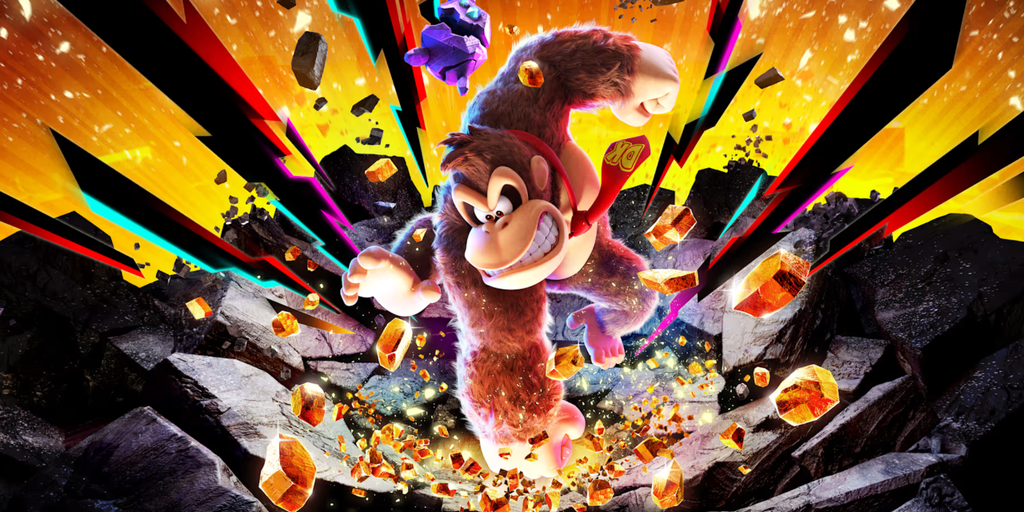
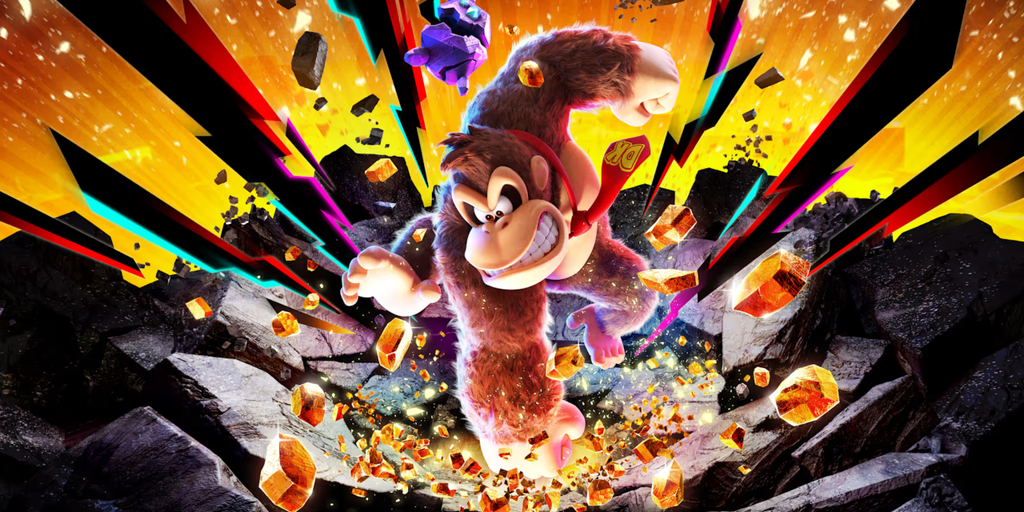
Nintendo fully unveiled the Nintendo Switch 2 this week, and it sports a bigger LCD screen, updated Joy-Con controllers that can also be used as mice, two USB-C ports, and a better kickstand. It can also play games at 4K resolution on your TV, and 1080p at 120 frames per second on the Switch 2 itself.
Of course, none of that would even matter if there weren’t some killer games on the way. We’ll see a few big ones right at launch, with more to come later—and we’ve combed through the announcements to find the best stuff on the way.
Mario Kart World (June 5)
The first thing that popped to mind when we saw Mario Kart World was, “Hey, it’s Forza Horizon!” Mario Kart World offers a whole bunch of tracks to race on—over 30 of them—but the big idea here is that all of these tracks are part of a unified open world. So you can go for your best time on your favorite track, but you can also spend time exploring the wide world of Mario Kart by free-roaming the map on your own or with friends.
Legend of Zelda upgrades (June 5)
These are two separate games—The Legend of Zelda: Breath of the Wild and Tears of the Kingdom—but we’re lumping them into one, because what makes them new is about the same for both. It’s a simple list, but it might be enough to warrant diving back in.
The Switch 2 editions of these games will feature enhanced resolution, smoother frame rates, an additional save slot, and faster load times. They’ll also support the new Zelda Notes app, which will help you navigate the world, as well as give you a community-created repository of Ultrahand contraptions to use in your own game.
Better yet, if you already own these games (you do), then you can buy an upgrade instead of having to re-buy the whole game. We wish it was free, but it’s better than having to re-purchase the whole game. However, Nintendo did confirm that the Zelda upgrades will be free if you have the Nintendo Switch Online + Expansion Pack membership.
Donkey Kong Bananza (July 17)
Donkey Kong 64 fans: You’ve been waiting a long time, but your patience is being rewarded with Donkey Kong Bananza, an open-world 3D Donkey Kong game where you’ll be battling the mysterious VoidCo to reclaim the Golden Bananas they stole from you.
One of the most exciting features of this one is the high level of destructibility offered by the environment. With a vibe that recalls the lovely Super Mario Odyssey, this is one to look out for.
Super Mario Party Jamboree NS2 Edition (July 2025)
Super Mario Party Jamboree originally hit in 2024, and this is another example of a game getting the Switch 2 upgrade treatment. It has all of the features of the original, looking better than ever, but it’ll also add minigames to address the Nintendo Switch 2’s unique features.
If you and your friends have the optional camera, for example, then you can see a live portrait of yourself next to your character—plus there are mini-games that take advantage of the fact that the Nintendo Switch 2 controllers can act as mice.
Hyrule Warriors: Age of Imprisonment (Q4 2025)
The latest Hyrule Warriors sequel is exactly what you’d expect: Legend of Zelda characters in the familiar hack-and-slash Dynasty Warriors formula, albeit with Tears of the Kingdom-style graphics. The game takes you back in time to before the cataclysm to a period in Hyrule’s history called the Imprisonment War, and once again lets you fight off enemies by the thousands.
Metroid Prime 4: Beyond (2025)
Metroid Prime 4: Beyond will be coming to both the Nintendo Switch and Switch 2. If you’re playing it on Switch 2, though, you’ll get a bunch of additional features on top of finally getting a new Metroid game (Kept us waiting, huh, Nintendo?).
You can play it at 4K/60fps on your television or 1080P/120fps on your Switch 2. It also has enhanced textures and load times. The most exciting part for FPS fans, though, is that it’ll support using the mouse feature of the Switch 2 controllers.
Drag x Drive (TBA)
This entry is designed to show off the Switch 2 Joy-Con controllers in their best light. Teams of 3 players will battle on a basketball court, playing as futuristic wheelchair athletes. You’ll have to use the two controllers’ mousing functions simultaneously to keep your chair moving, and then when you’re in range, pick one of them up and gooseneck your wrist to put the ball through the hoop.
Pokémon Legends Z-A (2025)
It’s time to head back to Lumiose City from Pokemon X and Y, but in much greater detail. For the first time, though, this series will allow you to battle as a Pokemon trainer in real time, moving around on the battlefield and deploying your Pokemon when you want.
The Duskbloods (2026)
While Sony doesn’t seem keen on resurrecting Bloodborne anytime soon, From Software is still hungering to re-enter the world. Enter The Duskbloods, a multiplayer game exclusive to the Switch 2 from developer From Software.
A quick look at the trailer will show you what we’re talking about. This game has a Victorian horror aesthetic that definitely reminds us of Bloodborne. From Software’s Elden Ring: Nightreign is set to come out this year, and Duskbloods next—it seems like From is going big on multiplayer games right now.
Your multiplatform faves
Alongside the great games above, there are tons of games coming to Switch that have already appeared elsewhere. If you’re one of those gamers who finds that playing a game on Switch or Steam Deck enhances the experience, you’re about to be buried in riches. Elden Ring, Final Fantasy VII, Cyberpunk 2077, Star Wars Outlaws—these games are all coming to the Switch.
Edited by Andrew Hayward
GG Newsletter
Get the latest web3 gaming news, hear directly from gaming studios and influencers covering the space, and receive power-ups from our partners.
Source link

Tokenized Gold Nears $2B Market Cap as Tariff Fears Spark Safe Haven Trade

Ross Ulbricht To Speak At Bitcoin 2025

Solana Eyes $200 Target As It Gains Momentum – Recovery Could Mirror 3-Month Downtrend

BTC-denominated insurance firm meanwhile secures $40m in VC funding

‘You Want To Own the Most Hated Thing’ – Arthur Hayes Says Ethereum Set To Outrun Solana As Memecoin Craze Fades

Crypto Braces for a Hidden $4.5 Trillion Catalyst for Bitcoin, Ethereum, Cardano, XRP Price

Block Agrees to $40M NYDFS Penalty Over Lackluster Compliance Program

Top Bitcoin miners produced nearly $800M of BTC in Q1 2025

Tariffs, Trade Tensions May Be Positive for Bitcoin (BTC) Adoption in Medium Term: Grayscale

The U.S. Tariff War With China Is Good For Bitcoin Mining

Dogecoin Bull Div Plays Out, Analyst Maps Next Price Targets

Web3 search engine can reshape the internet’s future

Billionaire Ray Dalio Says He’s ‘Very Concerned’ About Trump Tariffs, Predicts Worldwide Economic Slowdown

Top 4 Altcoins to Sell Before US-China Trade War Extends Beyond 125% Tariffs

OpenAI Countersues Elon Musk, Accuses Billionaire of ‘Bad-Faith Tactics’

Arthur Hayes, Murad’s Prediction For Meme Coins, AI & DeFi Coins For 2025

Expert Sees Bitcoin Dipping To $50K While Bullish Signs Persist

Aptos Leverages Chainlink To Enhance Scalability and Data Access

Bitcoin Could Rally to $80,000 on the Eve of US Elections

Crypto’s Big Trump Gamble Is Risky

Sonic Now ‘Golden Standard’ of Layer-2s After Scaling Transactions to 16,000+ per Second, Says Andre Cronje

Institutional Investors Go All In on Crypto as 57% Plan to Boost Allocations as Bull Run Heats Up, Sygnum Survey Reveals

Ripple-SEC Case Ends, But These 3 Rivals Could Jump 500x

Has The Bitcoin Price Already Peaked?

A16z-backed Espresso announces mainnet launch of core product

The Future of Bitcoin: Scaling, Institutional Adoption, and Strategic Reserves with Rich Rines

Xmas Altcoin Rally Insights by BNM Agent I

Blockchain groups challenge new broker reporting rule

I’m Grateful for Trump’s Embrace of Bitcoin

Trump’s Coin Is About As Revolutionary As OneCoin
Trending

 24/7 Cryptocurrency News5 months ago
24/7 Cryptocurrency News5 months agoArthur Hayes, Murad’s Prediction For Meme Coins, AI & DeFi Coins For 2025

 Bitcoin3 months ago
Bitcoin3 months agoExpert Sees Bitcoin Dipping To $50K While Bullish Signs Persist

 24/7 Cryptocurrency News3 months ago
24/7 Cryptocurrency News3 months agoAptos Leverages Chainlink To Enhance Scalability and Data Access

 Bitcoin5 months ago
Bitcoin5 months agoBitcoin Could Rally to $80,000 on the Eve of US Elections

 Opinion5 months ago
Opinion5 months agoCrypto’s Big Trump Gamble Is Risky

 Altcoins2 months ago
Altcoins2 months agoSonic Now ‘Golden Standard’ of Layer-2s After Scaling Transactions to 16,000+ per Second, Says Andre Cronje

 Bitcoin5 months ago
Bitcoin5 months agoInstitutional Investors Go All In on Crypto as 57% Plan to Boost Allocations as Bull Run Heats Up, Sygnum Survey Reveals

 Price analysis5 months ago
Price analysis5 months agoRipple-SEC Case Ends, But These 3 Rivals Could Jump 500x


